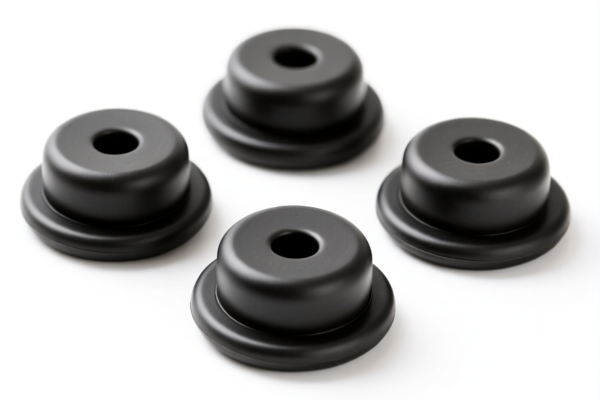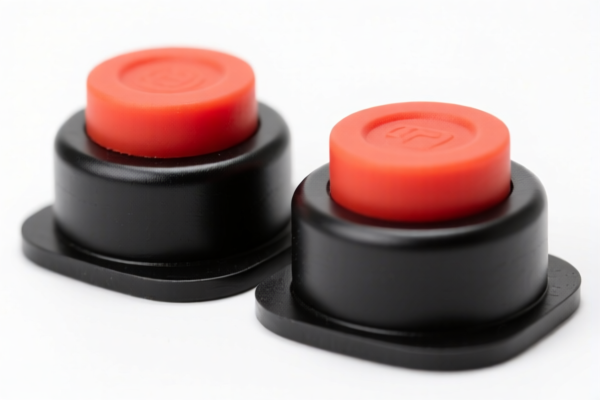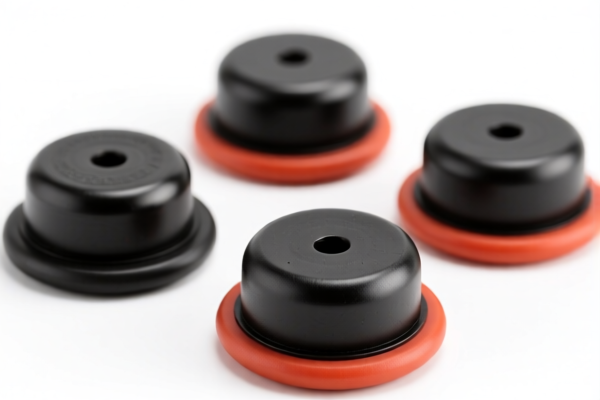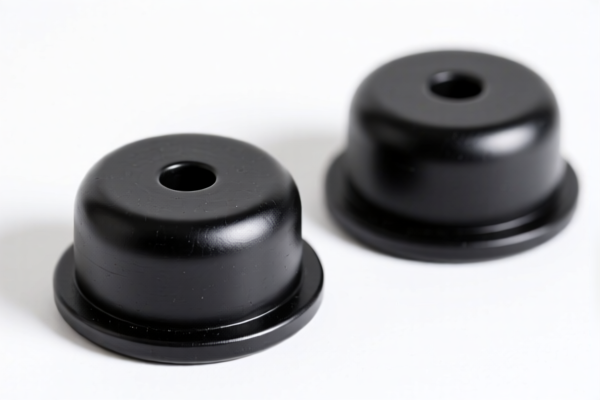| HS Code | Official Doc | Tariff Rate | Origin | Destination | Effective Date |
|---|---|---|---|---|---|
| 8487900080 | Doc | 83.9% | CN | US | 2025-05-12 |
| 8487900040 | Doc | 58.9% | CN | US | 2025-05-12 |
| 8479899599 | Doc | 57.5% | CN | US | 2025-05-12 |
| 8479899599 | Doc | 57.5% | CN | US | 2025-05-12 |
| 4016995500 | Doc | 57.5% | CN | US | 2025-05-12 |
| 4016993000 | Doc | 55.0% | CN | US | 2025-05-12 |
| 4008194000 | Doc | 55.0% | CN | US | 2025-05-12 |
| 4008198000 | Doc | 58.3% | CN | US | 2025-05-12 |




Damper Buffers
Damper buffers, also known as shock absorbers or simply dampers, are mechanical devices designed to control shock and vibration in dynamic systems. They dissipate energy, reducing the amplitude of oscillations and preventing excessive movement or noise.
Material
Damper buffers are constructed from a variety of materials, selected based on application requirements such as temperature range, load capacity, and fluid compatibility. Common materials include:
- Steel: High strength, durability, and cost-effectiveness make steel a common choice for damper bodies and rods. Alloys are often used to improve corrosion resistance.
- Aluminum: Lighter than steel, aluminum is used in applications where weight is a concern.
- Rubber: Used for simple, low-frequency vibration isolation and damping. Often used in bushings and mounts.
- Fluids: Hydraulic fluids (mineral oil, silicone oil, synthetic fluids) are central to the damping action in many designs. The viscosity and properties of the fluid are critical to performance.
- Plastics/Polymers: Used in specialized applications, often for lightweight or chemically resistant dampers.
- Gas (Nitrogen): Used in gas-charged dampers, often in combination with hydraulic fluids.
Purpose
The primary purpose of damper buffers is to:
- Reduce oscillation: Minimize bouncing, swaying, or other unwanted movements.
- Control energy: Dissipate kinetic energy generated by impacts or vibrations.
- Improve stability: Enhance the control and predictability of dynamic systems.
- Protect components: Prevent damage to sensitive parts from shock and vibration.
- Reduce noise: Minimize noise generated by impacts and vibrations.
Function
Damper buffers function by converting kinetic energy into other forms of energy, typically heat, through friction. The most common mechanisms include:
- Fluid Damping: A piston moves through a fluid-filled chamber, forcing the fluid through small orifices or past restrictive passages. The resistance to fluid flow creates a damping force proportional to the velocity of the piston.
- Friction Damping: Friction between surfaces dissipates energy as they move relative to each other.
- Spring-Mass-Damper Systems: Dampers are often integrated with springs to create a controlled oscillatory system. The damper controls the rate at which the spring returns to equilibrium.
- Viscoelastic Damping: Utilizing materials with both viscous and elastic properties to absorb and dissipate energy.
Usage Scenarios
Damper buffers are employed in a wide range of applications, including:
- Automotive: Suspension systems (shock absorbers), engine mounts, hood dampers.
- Aerospace: Landing gear, control surfaces, vibration isolation for sensitive equipment.
- Industrial Machinery: Vibration isolation for motors, pumps, compressors, and other equipment.
- Construction: Building isolation systems, door closers, elevator buffers.
- Furniture: Drawer slides, soft-close hinges, chair mechanisms.
- Sports Equipment: Bicycle suspension, motorcycle suspension, exercise equipment.
- Firearms: Recoil pads and buffers to reduce felt recoil.
Common Types
- Hydraulic Dampers: Most common type, utilizing fluid resistance for damping. Can be single-acting or double-acting.
- Gas-Charged Dampers: Utilize gas pressure (typically nitrogen) in addition to hydraulic fluid, offering improved performance and consistency.
- Friction Dampers: Simple and cost-effective, relying on friction between surfaces.
- Viscoelastic Dampers: Utilize viscoelastic materials to absorb and dissipate energy. Often used for higher frequency vibrations.
- Rotary Dampers: Used to control rotational motion, common in door closers and automotive components.
- Adjustable Dampers: Allow for fine-tuning of damping characteristics, common in performance automotive applications.
- Magnetorheological Dampers: Utilize fluids that change viscosity in response to a magnetic field, allowing for dynamic control of damping characteristics.
Damper buffers, based on the provided information, fall under articles of vulcanized rubber used for vibration control in vehicles. Here are the relevant HS codes:
-
4016995500: Other articles of vulcanized rubber other than hard rubber; Other; Other; Other: Vibration control goods of a kind used in the vehicles of headings 8701 through 8705. This code specifically covers other vibration control goods made of vulcanized rubber, excluding hard rubber, and intended for use in vehicles (headings 8701-8705).
- 40: Rubber and articles thereof.
- 16: Articles of vulcanized rubber other than hard rubber.
- 99: Other.
- 55: Vibration control goods of a kind used in the vehicles of headings 8701 through 8705.
-
4016993000: Other articles of vulcanized rubber other than hard rubber; Other; Other; Of natural rubber: Vibration control goods of a kind used in the vehicles of headings 8701 through 8705. This code is for vibration control goods made of natural rubber, used in vehicles (headings 8701-8705).
- 40: Rubber and articles thereof.
- 16: Articles of vulcanized rubber other than hard rubber.
- 99: Other.
- 30: Of natural rubber.
-
4008194000: Plates, sheets, strip, rods and profile shapes, of vulcanized rubber other than hard rubber; Of cellular rubber; Other; Of natural rubber; Other. This code covers plates, sheets, strips, rods, and profile shapes made of cellular, natural rubber.
- 40: Rubber and articles thereof.
- 08: Plates, sheets, strip, rods and profile shapes, of vulcanized rubber other than hard rubber.
- 19: Of cellular rubber.
- 40: Of natural rubber.
-
4008198000: Plates, sheets, strip, rods and profile shapes, of vulcanized rubber other than hard rubber; Of cellular rubber; Other; Other; Other. This code covers plates, sheets, strips, rods, and profile shapes made of cellular rubber, excluding natural rubber.
- 40: Rubber and articles thereof.
- 08: Plates, sheets, strip, rods and profile shapes, of vulcanized rubber other than hard rubber.
- 19: Of cellular rubber.
- 80: Other.
Tax Rate Information:
All listed HS codes have a base tariff of either 0.0%, 2.5%, or 3.3%. However, they are also subject to a 25.0% additional tariff. Furthermore, a 30.0% additional tariff will be applied after April 2, 2025.
Important Note:
The total tariff rate for these HS codes is either 55.0%, 57.5%, or 58.3%, depending on the specific code and material composition. Please verify the material of the damper buffers (natural rubber or other) to determine the correct HS code and applicable tariff.
Customer Reviews
No reviews yet.